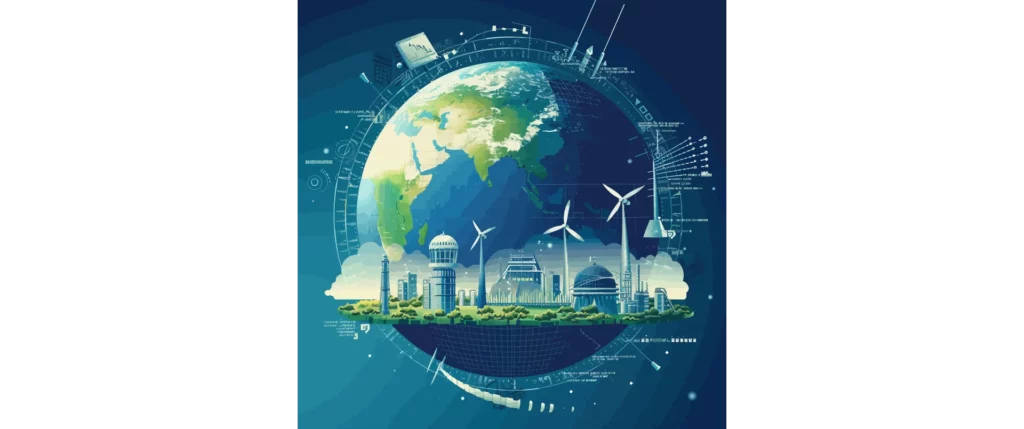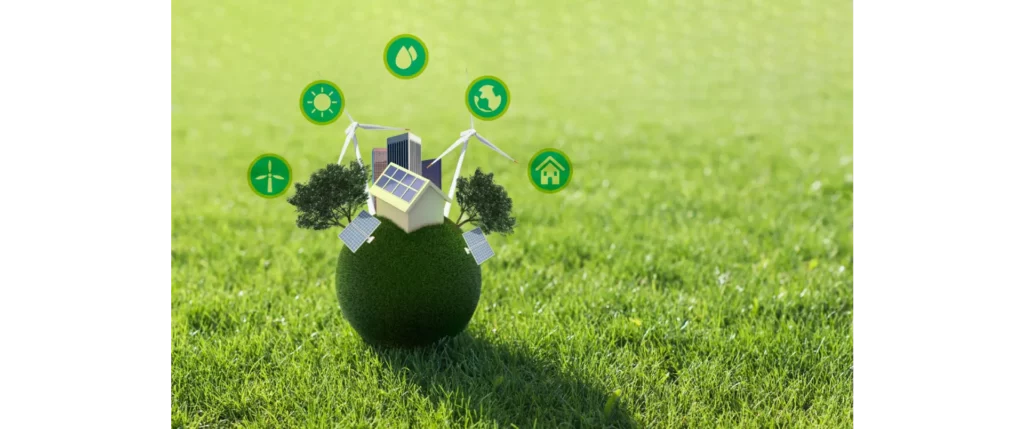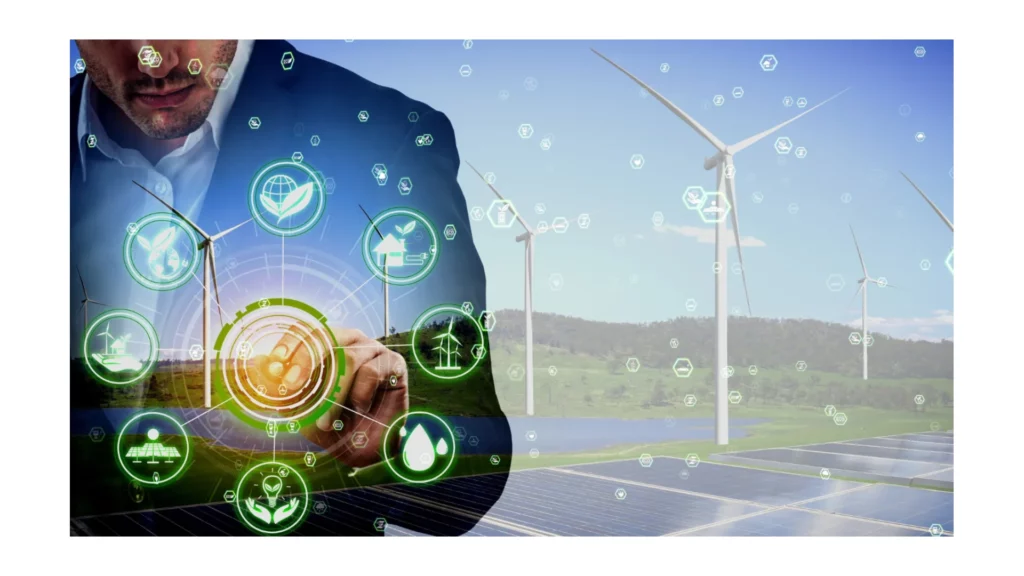Green Energy Technologies
There are many challenges associated with implementing a consistent policy for green energy technologies.
In this article, we will look at the benefits of renewable energies and the need for automation and communication to facilitate their integration into the power grid.
To solve these challenges, we must adopt policies and incentives that encourage the development of renewable energy technologies.
Let's explore each of these in turn. After all, renewable energy technologies will have the greatest impact if they are implemented effectively.
Understanding Green Energy Technologies
Green energy technologies encompass a wide range of sustainable energy sources and practices that aim to reduce the environmental impact of energy production and consumption.
These technologies harness renewable resources such as solar, wind, hydroelectric, geothermal, and biomass to generate electricity, heat, and fuel without depleting finite fossil fuel reserves.
By harnessing natural processes and minimizing greenhouse gas emissions, green energy technologies contribute to combating climate change and promoting a more sustainable future.

4 Key Components of a Successful Policy Implementation
- Setting Clear Renewable Energy Targets: Clear and measurable renewable energy targets are essential for an effective green energy policy. They provide direction and motivation for stakeholders to work towards achieving them. These targets can be a percentage of renewable energy or a reduction in carbon emissions, guiding decision-making and resource allocation.
- Incentives and Subsidies for Adoption: Governments promote green energy adoption with financial incentives like tax breaks, grants, feed-in tariffs, and low-interest loans. These make renewable technologies more financially appealing, stimulating demand and accelerating the transition to green energy.
- Investment in Research and Development: Continuous innovation is vital for improving green energy technologies. Governments and industries must invest in research and development for energy storage, grid integration, and advanced manufacturing. Research leads to breakthroughs, lowering costs and expanding renewable energy solutions.
- Infrastructure Development: Green energy tech needs a strong, adaptable infrastructure. Prioritize smart grids, energy storage, and EV charging networks. Interconnected and flexible infrastructure ensures reliable renewable energy distribution even during intermittent generation.

Challenges of Implementing a Consistent Set of Policies for Green Energy Technologies
The global energy challenge requires aligning access to energy with sustainable development through consistent policies for renewable energy adoption.
The IEA highlights the need for cooperation among governments, businesses, and communities to shift from traditional energy systems and support developing countries in transitioning to clean technologies.
This includes ending fossil fuel subsidies, implementing carbon pricing, and integrating renewable energy into national regulations and infrastructure.
A focus on reducing air pollution and health risks in developing regions is also critical.
Governments must significantly increase R&D investment in green technologies to facilitate this transition, aiming for net-zero emissions by 2050.
This requires a strategic emphasis on public funding for R&D and fostering private sector engagement to bring innovative energy solutions to market efficiently.

Benefits of Implementing Renewable Energy Technologies
Investing in renewable energy technologies offers numerous advantages, making it an essential step towards a sustainable and eco-friendly future.
Here's a concise overview highlighting the key benefits:
- Reduced Environmental Impact: Renewable energy sources, such as wind, solar, and biomass, produce minimal to no pollution or greenhouse gases, significantly lowering the carbon footprint and contributing to cleaner air and water.
- Economic Benefits: Implementing renewable energy can stabilize energy prices by reducing dependence on fluctuating fossil fuel markets. It also promotes energy independence, reducing geopolitical risks associated with oil and gas supplies. Additionally, renewable energy projects can create numerous jobs in installation and maintenance, boosting local economies.
- Sustainability and Resilience: Renewable energy is inexhaustible, unlike fossil fuels. It enhances national energy security and resilience against power shortages or external supply disruptions.
- Lower Operating Costs: Technologies like solar panels and wind turbines require less maintenance due to fewer moving parts and don't rely on expensive and volatile fuel sources, offering long-term savings on energy costs.
- Global Leadership: Countries like India are leading by example, significantly increasing their capacity for clean energy and aiming for renewables to constitute a substantial portion of their energy consumption by 2040. This not only addresses climate change but also positions these countries as leaders in the global shift towards sustainable energy.
- Job Creation: The renewable energy sector is labor-intensive, creating more jobs per unit of electricity generated compared to fossil fuels. These jobs are diverse, ranging from manufacturing to installation and maintenance, contributing to a vibrant and sustainable economic future.
In summary, the shift towards renewable energy is not just an environmental imperative but also a strategic economic and social opportunity, offering numerous benefits from reducing carbon emissions to creating jobs and ensuring energy security.

Need for automation and communication to support the integration of renewable energies into the power grid
As renewable energy grows, utilities struggle to manage supply and demand due to its unpredictability.
They rely on Automated Measurement and Reporting (AMR) devices to monitor and balance power within substations, requiring smarter grid infrastructure.
Key to integrating renewables into the grid is automation and advanced communication technologies, which facilitate the development of smart grid solutions to handle variable generation sources and ensure grid stability.
To address power balance challenges, three strategies are used: energy storage, backup plants, and demand-side management.
Artificial Intelligence (AI) helps integrate renewables and reduces the need to limit wind and solar power. By 2040, these innovations could cut 30 million tonnes of carbon emissions and save billions in infrastructure costs.
As renewable energy adoption increases, the grid must evolve with redundant network paths, including power supplies and routers, and incorporate information technology to boost reliability and efficiency.

3 Global Case Studies of Effective Policy Implementation
1. Germany's Energiewende
Germany's impressive Energiewende, or “energy transition,” serves as a successful example of a comprehensive green energy policy. The nation set ambitious goals for renewable energy and carefully planned various strategies to achieve them.
Germany has led the way in solar and wind energy by using subsidies, feed-in tariffs, and supporting community-based projects. They are a global leader in this transformation.
2. China's Investment in Solar Power
China's strong commitment to green energy is evident in its massive investment in solar power. With government support and attractive incentives, China has become a world leader in solar panel production and usage.
The ripple effects of this policy's triumph have been substantial, triggering a notable reduction in the worldwide costs associated with solar technology and thereby propelling the planet closer to a sustainable energy future.
3. Nordic Countries and Sustainable Policies
Denmark and Sweden, leading Nordic countries, have made significant progress in adopting sustainable policies. They prioritize wind energy, district heating, and energy efficiency in line with their strong commitment to environmental responsibility.
Their policies prioritize improving public transportation, energy-efficient architecture, and promoting renewable energy. Their efforts have resulted in significant reductions in carbon emissions, demonstrating the success and global impact of their sustainability initiatives.

Challenges and Overcoming Barriers
- Intricacies of Political and Economic Landscape: Transitioning to greener energy faces resistance from established interests in conventional energy. Overcoming this requires political will, enduring policies, and addressing economic barriers through subsidies and innovative financing. This will pave the way to a sustainable future.
- Confronting the Frontiers of Technology: In the green energy field, evolving technologies face efficiency and scalability limitations. To overcome these barriers, dedicated research and development are necessary. This effort is crucial in making renewable energy solutions competitive and reshaping the energy landscape.
- The Public Sphere: Awareness and Embrace: The shift towards sustainable energy relies on public support and awareness. Educating the public about the benefits of green energy, such as job creation and reducing environmental impact, is crucial. This will not only foster acceptance but also encourage active involvement in transitioning to a greener future.
Conclusion
Reflecting on the intricate tapestry of global efforts toward implementing consistent and effective green energy policies, it becomes abundantly clear that our collective journey toward sustainability is both a complex challenge and an inspiring endeavor.
As I navigate through the diverse case studies and insights, I am struck by the resounding impact of proactive policy measures in reshaping energy landscapes and nurturing the promise of a cleaner future.
Source:
A review of literature on the integration of green energy and circular economy

